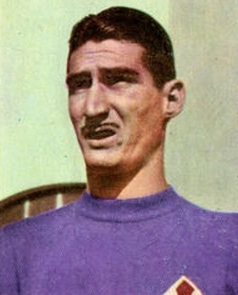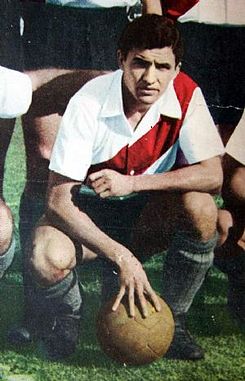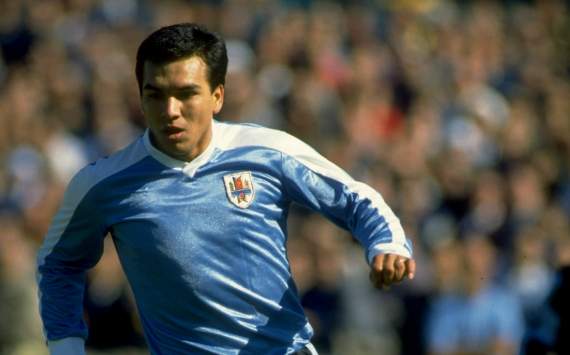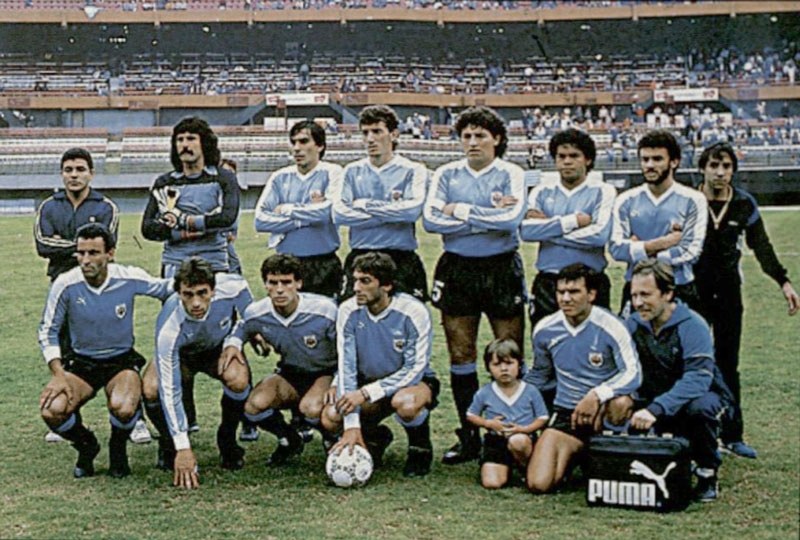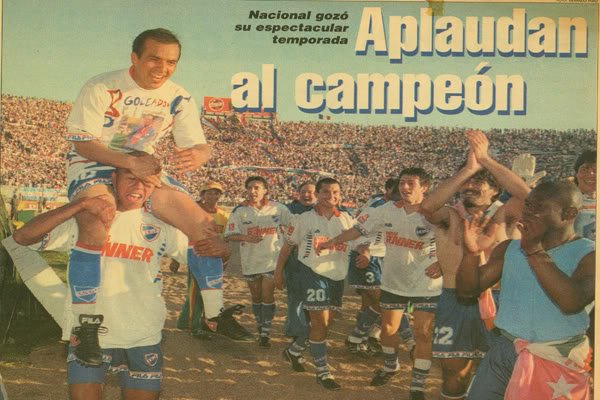Some player profiles for my lesser known players-
Julinho
Individual Accomplishments:
Voted 73rd Best Player of the twentieth century by Score
Brazil Football Hall of Fame
World Soccer World XI: 1960
Team Accomplishments:
1957 European Cup Runner-up
Serie A Champion: 1956
1953 Copa America Runner-Up
Campeonato Paulista 1959, 1963, 1966
Campeonato Pan-Americano: 1956
Torneio Rio-São Paulo: 1952, 1955, 1965
Taça Brasil: 1960
Torneio Roberto Gomes Pedrosa: 1967
Copa Rocca: 1960
Profile:
"The man who shut up Maracanã" - considered to be one of the greatest wingers in the history of football, and the best right winger Brazil has produced after Garrincha and Jairzinho - Julinho was a technically gifted, powerful, tricky, goalscoring winger with remarkable dribbling skills - in typical Brazilian mold. One of the great tragedies of Julinho's international career was the fact that in the 1950s, most South American national teams did not select their foreign-based players. However, Brazil asked Julinho to return to the national team for the World Cuo Finals in 1958. They even suggested that he would meet them in Europe after they arrived for the World Cup Finals. However, Julinho did not want to take a spot of a regular player who fought the World Cup qualifiers and the buildup and tuned the invitation down. If he had taken the spot, Brazil would have dropped Garrincha, who was the backup right wing leading up to the World Cup Finals. The rest as they say is history - Garrincha ascended to godly status in Julinho's right forward role - and Julinho could only play a leading part in the 1954 World Cup (with the likes of Didi, Nilton Santos, Djalma Santos) - scoring 2 goals before losing to Puskás's Magyars in the quarterfinal - a match dubbed the Battle of Bern where 3 players were sent off. Consequently, he missed out on Brazil's era of great success with the 1958 and 1962 World Cups - sandwiched between the heartbreak of 1950 - which became immortalized in wider public consciousness. At club level, Julinho played for Juventus and Portuguesa; and after joining Fiorentina was fundamental for the team to conquer their first Scudetto, apart from reaching the European Cup final vs Di Stéfano's Madrid. Here, Julinho will provide genius level of wingplay and a secondary goal threat from wider areas.
Profile taken from
@Invictus @Šjor Bepo
Canhoteiro
Individual Accomplishments:
Club Career Appearances 415 with 103 goals (that averages around 9 to 10 goals in a 38 game season)
Rated as the best Brazilian Left Winger by Big Soccer
Profile:
Pele when asked about his admired footballers childhood, did not hesitate in pointing to two:
Zizinho, and Canhoteiro. Although the first went to the great history thanks to his stay at Flamengo, and have been one of the best players in the 1950 World Cup in his country, the other we know little or nothing so far.
Born under the name of José Ribamar de Oliveira, Canhoteiro came into the world in the city of Coroatá, on September 24, 1932, and although just got to measure 1.68 meters tall, or perhaps because of this quality, and its axis nearby ground movements, remained for most of his career at the left end position, highlighted by a huge rivals to pull out over skill. His nickname portrays: "The Left Garrincha".
Born in Brazil within a humble family, and from an early age began to show an innate ability with the ball. Everyone knew in the neighborhood that little Joseph, the son of Don Cecilio, was different from the others, played to something else. At that time, the players were not well regarded by society and her father, fearful that his son was to err on the choice of way of life, he underwent a tight marking. Locked in a room, with books open and his right leg, good, tied to the leg of the table so that it could not move. So Joseph spent afternoons and paradoxically so began to feel free. As his father out the door, the child eyes off the books, a ball of paper was manufactured and started stamping feet left leg, her free.Hours and hours locked in a room hitting a ball of paper. Thousands of
embaixadinhas that forge which today is considered best lefty in the history of Brazilian football.
Don Cecilio attempts to make his son a man of honorable reputation were in vain and that fame often zurdito grew, first on the team in his neighborhood, the Caroate, and later in San Luis Paysandu. In those years his nickname and his first contact with his other passion, music emerge. Discovered by a scout of Sao Paulo, auditioned for the tricolor whole. Turcao, considered one of the toughest defenders in the country, offered to "prove" the value of the fine end. At the end of the clash, he approached his coach and said "
What am I going to do? It is good and fast. It 's good because I haggle with the waist and is fast because it has not even let me kick him. Fichen him . "
He soon began to delight fans who flocked to see in action the inventor of the "
solavanco " a dribble with which baffled rivals just moving the body. Embaucaba his waist, he showed them the way, tore running with the feet nailed to the ground, motionless ball and sewn to borceguí. He shook the contrary, he threw fired toward the side of deceit and left the way clear , leaving just him and the ball. Tell that to Antoninho, former player of Palmeiras, which had to be withdrawn because of injury by falling down the stairs of a newly Morumbi inauguarado after suffering the effects of devastating Canhoteiro waist.
Mythical it was his duels with Idario, lateral hard Corinthians, which according to chronicles dribbled 14 times consecutively in the final of the Paulista Championship 57. At the end of the meeting, Canhoto, as embarrassed by what happened, decided to invite his opponent a drink, emerging since then a great friendship between them. They have even reached an agreement, whereby each four plays Joseph would snatch the ball once. That was Canhoteiro, the player who wanted to have fun without disturbing, who asked his colleagues not pass him the ball more to not humiliate the opponent.
Certainly that Sao Paulo champion Paulista was trained by one of the most romantic characters in the history of football, the legendary Béla Guttmann, who questioned the reason for leaving out the technical talks to Zizinho and Canhoteiro said " and
hese two did not need to know anything else, what I could tell . "
(Canhoteiro is next to Pele)
World was approaching 58 and the Brazilian people dreamed that the front formed by Garrincha, Didi, Vava, Pele and Canhoteiro got uproot the stigma of Maracanazo. But in a concentration of selection, Canhoto, as he had done on many other occasions, he left the concentration to play incognito in a nightclub. The fat Feola, Brazil coach had imposed a strict internal regime and did not miss that act of indiscipline, relieving lefty Mario Lobo Zagallo by. In the words of singer Chico Buarque, Feola deprived the world to see the left-handed Canhoteiro; Brazil kept to himself his most precious treasure.
Those who knew him say that really meant a release for paulista; some even say that intentionally caused the incident, it was real panic to fly and was not convinced of going to a destination as far away as Sweden. Your World should have been 62, in Chile, a destination much closer, but two serious knee injuries, the first in 1961, were shutting down the brightness of your game without ever were to regain their level.
After retirement, his years as former athletes they led him gradually falling into poverty and vices, especially alcohol, why she began to have severe health problems, which ultimately produced his death in August 1974 because of stroke, when he was 42 years old.
